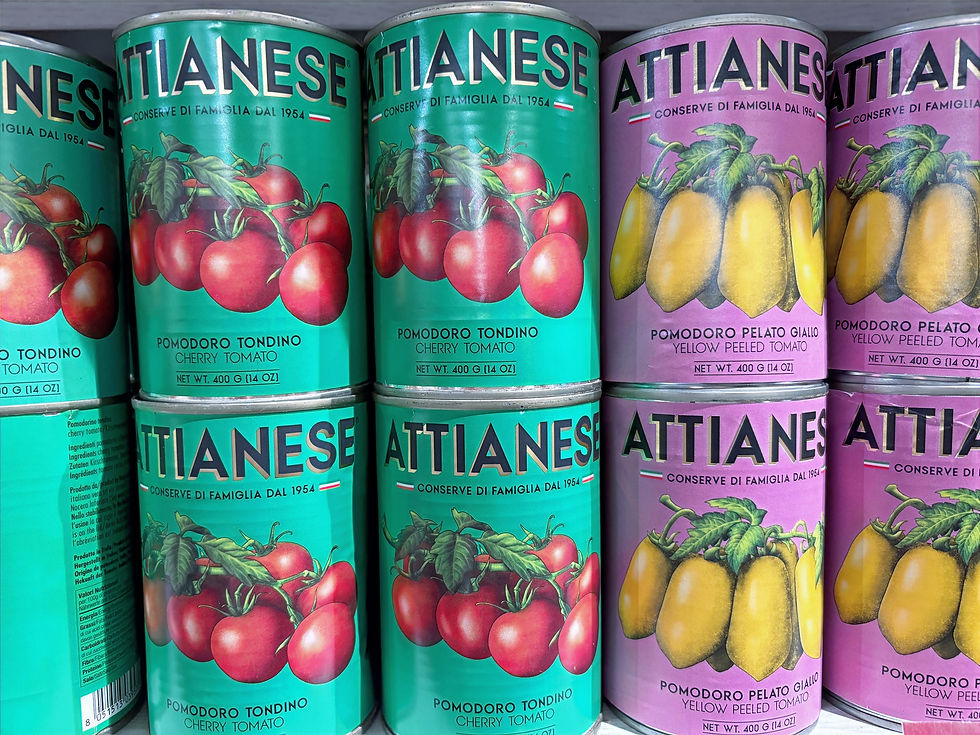The Deep Heart of Italian Hard Cheeses
- Made al Dente

- Jul 5
- 4 min read
Updated: Jul 6
A journey through flavor, craft, and centuries of tradition
There’s a kind of reverence that settles in the air when you cut into a wedge of aged Parmigiano Reggiano or grate a handful of Pecorino Romano over a steaming plate of pasta. These cheeses are more than ingredients — they are the result of patient craftsmanship, generations of memory, and the quiet rituals of rural life.

Each wheel carries the mark of its landscape: Alpine pastures, sun-drenched coasts, high valleys, and ancient shepherd routes. And while they're bound by centuries-old techniques, their relevance is timeless — gracing modern kitchens from Milan to Melbourne, in simple homes and Michelin-starred restaurants alike.
What Makes an Italian Hard Cheese?
Italian hard cheeses are typically aged, semi-fat to full-fat cheeses with firm texture and granular, crystalline structures. They're most often made from cow or sheep’s milk and are frequently stamped with PDO (Protected Designation of Origin) certifications — guaranteeing their origin, process, and integrity. These cheeses were born from necessity: preserving milk in forms that could withstand time, travel, and hunger.
They also happen to taste extraordinary.
A Selection of Italy’s Most Beloved Hard Cheeses
Parmigiano Reggiano (PDO) – The King of Cheese
Region: Emilia-Romagna
Milk: Raw cow’s milk
Aging: 12 to 36 months
Flavor: Nutty, salty, intensely savory
Best Use: Grated over pasta or risotto, chunked for antipasto, or eaten plain with a drop of aged balsamic
Parmigiano Reggiano has been made almost the same way since the 13th century. Monks in the Apennine hills began the process as a way to extend milk’s life. Today, each massive wheel is aged for up to three years, tended like a living thing — turned, inspected, and tested for perfection. You’ll hear it before you taste it: that unmistakable crystalline crunch under the knife.
Fun fact: Over 3.6 million wheels are produced annually — and every one is tapped and listened to by a trained affineur for quality.
Grana Padano (PDO) – Everyday Excellence
Region: Po Valley (Lombardy, Veneto, Trentino)
Milk: Partially skimmed cow’s milk
Aging: 9 to 24 months
Flavor: Milder and sweeter than Parmigiano
Best Use: Grated on soups or pasta, or sliced into sandwiches and salads.
While Parmigiano is often aged longer, Grana Padano offers a gentler approach — a versatile, reliable table cheese. It was developed by monks in the 12th century as a solution for surplus milk. Today, it's one of Italy’s most popular cheeses worldwide, prized for its balanced flavor and affordability.
Pecorino Romano (PDO) – The Salted Soul of Lazio
Region: Lazio, Sardinia, Tuscany (counterintuitive, I know.. but yes Pecorino Romano is produced also in Sardinia and in the province of Grosseto in Tuscany)

Milk: Sheep’s milk
Aging: Minimum 5 months
Flavor: Sharp, salty, punchy
Best Use: Essential for carbonara, amatriciana, and cacio e pepe
This is the cheese that fed Roman legions — compact, durable, protein-rich. It’s aged in cool caves and brined heavily, giving it that bold, unmistakable taste. While it's now made primarily in Sardinia, its heart remains Roman, and its sharpness is the soul of many iconic pasta dishes.
Trentingrana (PDO) – The Alpine Cousin
Region: Trentino-Alto Adige
Milk: Raw cow’s milk
Aging: 15+ months

Flavor: Delicate, nutty, herbaceous
Best Use: Melted into polenta, shaved over vegetables, or served with mountain honey
Made in small alpine dairies, Trentingrana is a more delicate variation of Grana Padano. Its milk comes from cows grazing in high-altitude pastures, giving it a soft floral tone. Fewer than 100,000 wheels are produced annually — it’s cheese made with intention, not for scale.
Pecorino Toscano, Sardo & Siciliano – Three Faces of the South
These three pecorini show the versatility of sheep’s milk when married to terroir. From the soft hills of Tuscany to the rugged cliffs of Sardinia and the fiery kitchens of Sicily, each carries its own story.

Cheese Wisdom for the Kitchen
Store it well: Wrap cheese in parchment, not plastic. Keep it in the fridge’s veggie drawer where humidity is stable.
Let it breathe: Remove from cold storage 30 minutes before serving. Cheese has a nose — give it air.
Don’t waste the rind: Especially for Parmigiano and Grana — add it to broth, soups, or ragù for extra depth.
Why It Matters
In a time when convenience often outweighs craft, Italian hard cheeses remain a living example of time-honored patience. Each wheel is a story of place, season, and tradition. By understanding what lies behind that chunk of cheese — the farmers, the fields, the rhythms of curd and salt — we not only eat better, we live more meaningfully.
So next time you shave Parmigiano over your pasta or crumble Pecorino onto a stew, pause for just a moment. That flavor has traveled through centuries to reach your table.


